Mantenin Coffee Bean Flavor and Taste different from Indonesian Sumatra Coffee Bean Story
Sumatra is one of the largest islands in Indonesia, which is a country made up of thousands of small islands. Ninety percent of the coffee grown in Indonesia comes from small independent farms. Sumatran coffee beans are characterized by low acidity, high concentration, grassy aroma and rich coffee taste. If you are a person who is afraid of drinking coffee acidity, choosing Sumatran coffee beans to taste is an opportunity not to be missed. When it comes to Sumatran coffee, we have to mention manning coffee. The common mantenin coffees in the front street are: Lin Dong manning coffee, golden mantenin coffee, old mantenin coffee, tiger manning coffee. What is the difference between these four common mantenin coffees? The front street coffee helped us make some summaries.
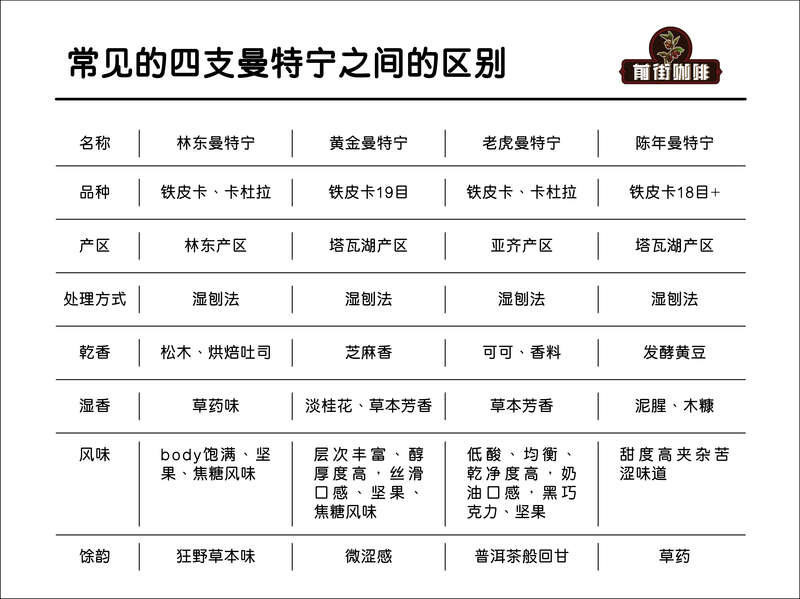
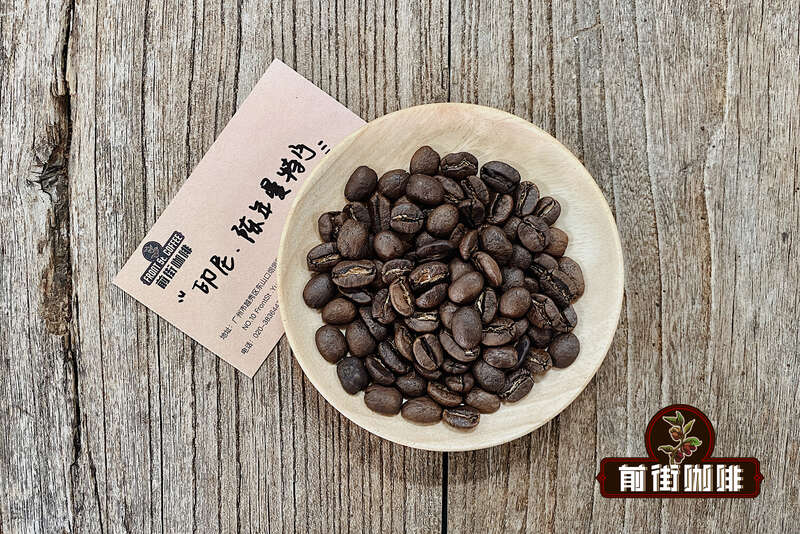
Sumatra Coffee Mini File
Sumatra has three main growing areas: the northern part of Aceh, the slightly southward area around Lake Lake Toba, and the recent rise of islands near Mangkuraja. It may also be traced back to smaller areas of Takengon, Bener Mariah, Lintong, Sidikalang, Dolok Sanggul, and Seribu Dolok, which surrounds Lake Doba in Aceh. In the past, the coffee beans sold in this area were called "Sumatra Mantenin", but in fact there was no place name called Mantenin, which came from the ethnic names of the local islanders. Manning is usually divided into grades, classified as Grade1 or Grade2. There is no doubt that the grading method is to test the quality of raw beans with cups rather than the raw beans themselves. Sumatran coffee beans are exported through the port of Medan, but stagnated in the port for too long before export, hot and humid climate factors will not be conducive to the quality of coffee beans.
Altitude: 1100-1300m in Aceh, 1100-1600m in Lake Doba, 1100-1300m in Mangkuraja
Harvest: September to December
Varieties: Typica (including Bergandal, Sidikalang, Djember), Timtim, Ateng, Onan Gajang
Three major producing areas of Sumatra
Gayo producing area of Aceh
Aceh (Aceh), 1110 to 1300 meters above sea level, in the northernmost corner of Sumatra. In Aceh province, north of Sumatra, the Jiayu producing area around the scenic Lake Tawar has an average 2200mm of abundant annual rainfall and an excellent average altitude of about 1100 to 1400m, and volcanic soil that helps to grow coffee. Coffee planting is usually carried out by independent small farmers in this area, and coffee quality is improved by shading trees.
Unlike Lindong Mantenin, another producing area of Indonesian boutique coffee, gayo coffee is more calm and introverted, usually with a very thick taste and rich chocolate fruit flavor.
Lindong producing area
Lake Toba is currently the largest and deepest volcanic lake in the world, with a depth of nearly 500 meters. The entire Lake Toba is 100 kilometers long and 30 kilometers wide, with a unique geographical environment above 900 meters above sea level. the mineral-rich soil left by the volcanic eruption makes the area of Lake Toba a perfect soil climate suitable for growing coffee. The hinterland of Lake Toba is extremely large. Most coffee trees grow on the undulating terrain and fern-covered plateau, and most of them are planted without shade. Coffee is produced here-that is, the main area of Mantenin, which is popular all over the world, is located in the forest east area southwest of Lake Toba. Until the 1990s, it was gradually planted in high altitude areas. The current well-known Lintong area has an average coffee planting height of between 1200 and 1500 meters in the production area. Coffee is planted by shade farmers under shade trees and exfoliates a peculiar flavor and a low and lively full-bodied flavor.
Mangkuraja, Banguru province
The estate is located on the cool and pristine western slope of the Bukit Barisan Mountains on the South Sumatra Plateau of Indonesia, ranging from 1100 to 1300 meters above sea level. The tranquil and vivid landscape fully embraces Mangkuraja Manor, coexisting with lush rainforests, flowing rivers and natural springs. This full-bodied, moderately acidity Mangkuraja coffee is famous among shrewd coffee connoisseurs for its unique rich aroma and flavor, with delicate leather and fruit aromas. It is sure to provide a vibrant and unforgettable coffee experience.
Sumatra wet planing method
Wet shaving (Wet-Hulling) is the traditional treatment of Indonesian Sumatran coffee, that is, when the raw beans are half-dried and the moisture content is as high as 30% to 50%, the seed shells are removed first, and then continue to be dried in order to solve the problem of drying for too long. As the drying time is shortened to two to four days, the fermentation period of coffee beans is shortened, and the acidity decreases a lot, but the relative thickness increases, with obvious aromas of caramel and fruit, even with aromas of herbs or grass and wood. this is the unique regional fragrance of Sumatra.
However, the effect of early removal of the seed shell is that the raw beans are half dry without the last two layers of protection (note: coffee beans' four layers of protection: pericarp, pectin, seed shell, silver skin), which is like taking off your clothes and basking in the sun. Although the wet planing method solves the problem of drying time, the relative probability of raw beans being contaminated by molds, fungi and yeasts is also greatly increased. Paradoxically, however, these factors have become the key factors in creating Manning's special aroma.
Another feature of the wet planing method is the increase in the probability of the so-called "sheep's hoof beans". Because the raw beans are planted with a shell planer in the semi-soft stage when they are still very wet, the fragile soft wet raw beans are very easily cracked, broken or scratched by mechanical force, resulting in the so-called sheep's foot beans and scratched beans, resulting in the deterioration of the selling phase of raw beans.
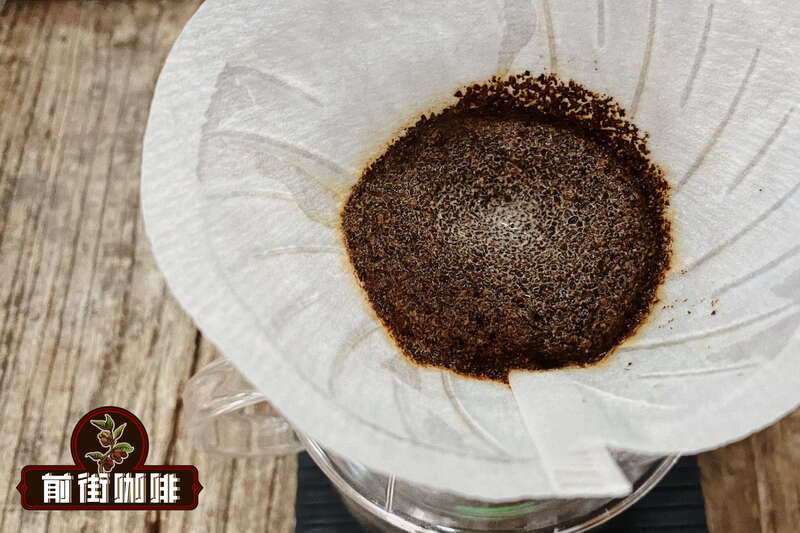
Important Notice :
前街咖啡 FrontStreet Coffee has moved to new addredd:
FrontStreet Coffee Address: 315,Donghua East Road,GuangZhou
Tel:020 38364473
- Prev
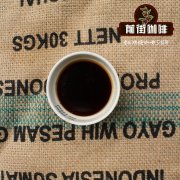
Starbucks Colombia Coffee Theme Classroom Starbucks Colombia Coffee Story
Professional coffee knowledge exchange More coffee bean information Please pay attention to coffee workshop (Weixin Official Accounts cafe_style) Starbucks coffee classroom, every month will arrange wonderful coffee tasting courses to share with you, each Starbucks store will occasionally send coffee tasting courses to customers. Starbucks has carefully prepared dozens of coffee classrooms with different themes for star fans. Each issue
- Next
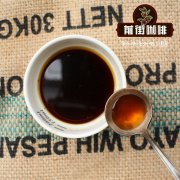
Characteristics of coffee beans in Asia and the Pacific introduce the story of low-caffeine Xianglong comprehensive coffee and low-caffeine coffee beans
Professional coffee knowledge exchange more coffee bean information please follow the coffee workshop (Wechat official account cafe_style) Starbucks coffee classroom, every month will arrange wonderful coffee tasting courses to share with you, the major Starbucks stores will provide customers with coffee tasting courses from time to time. Starbucks is meticulous for star fans.
Related
- What documents do you need to go through to open a coffee shop? coffee shop coffee shop certificate processing process
- How to purchase Coffee beans in small Cafe how to choose a suitable supplier for domestic Coffee supply Company
- How to drink Starbucks Fragrance White Coffee? how to make Australian White Coffee? what Italian coffee beans are recommended?
- The Story of Flora Coffee: the name of Flora Coffee Bean and the implication of the Flowers on Florna Coffee
- How much does a cup of coffee cost? How much is the profit of a cup of coffee? What is the profit of the coffee shop in a year?
- Yunnan small Coffee, known as "fragrant Coffee", introduces the characteristics of Alpine Arabica Coffee producing areas in Yunnan, China
- 2023 latest Starbucks full menu price list how much is a cup of Starbucks coffee what is better to drink the most popular hot and cold drinks recommended
- Starbucks different kinds of Coffee Price list Starbucks menu 2023 Top Ten Best drinks in Starbucks
- Starbucks Spring praise Comprehensive matching Coffee Bean theme Story Packaging implication and taste description
- The cost of a cup of coffee latte American coffee cost price and selling price

